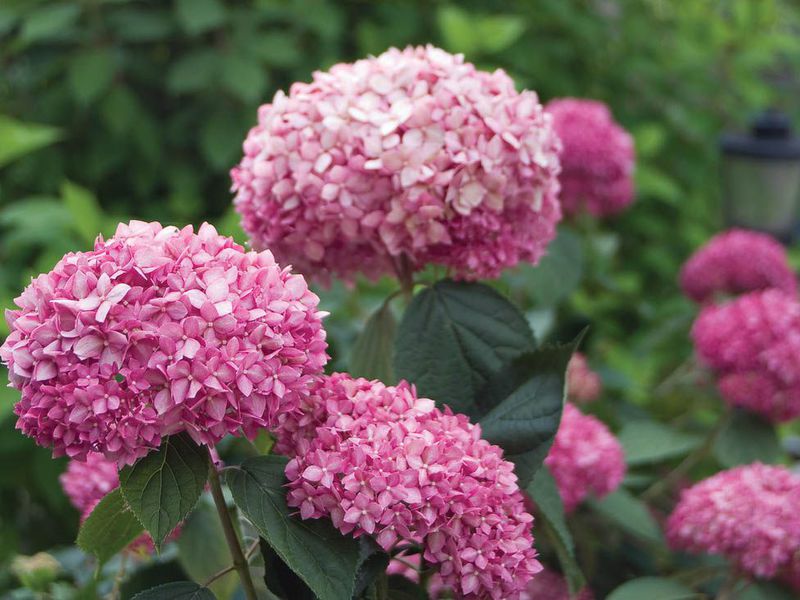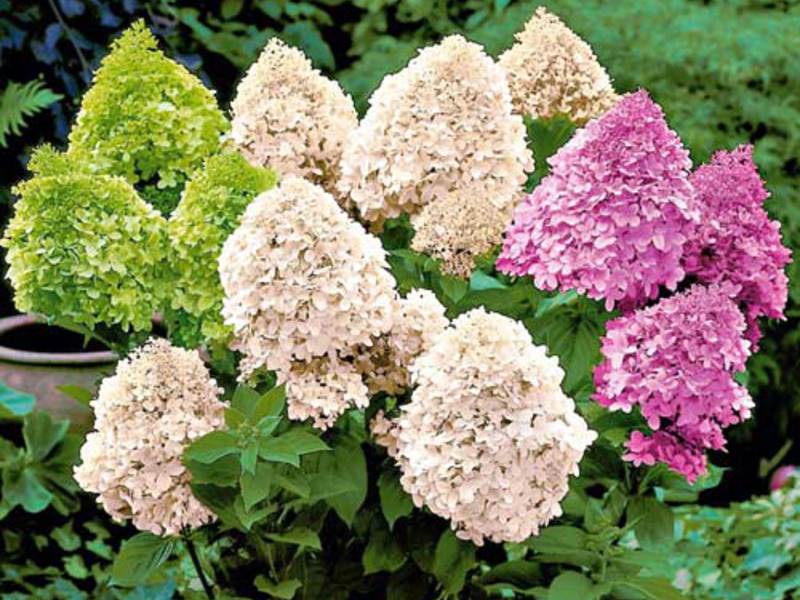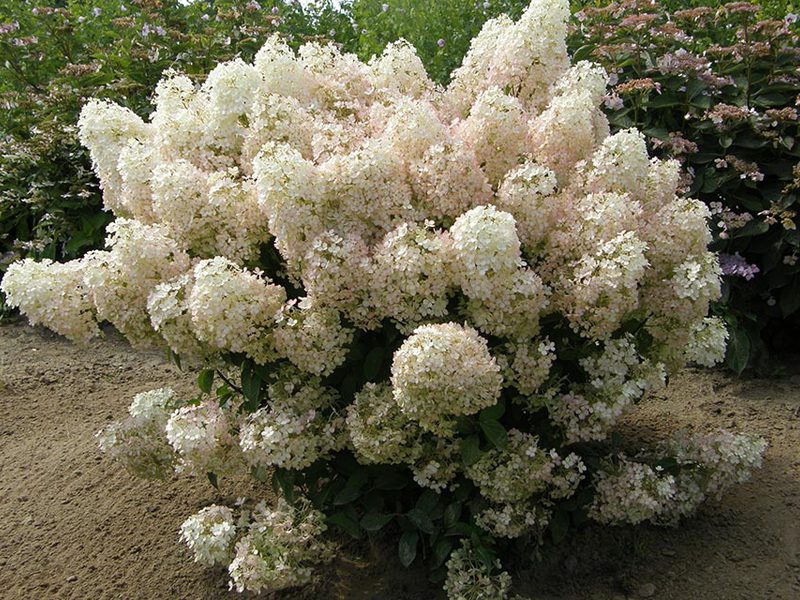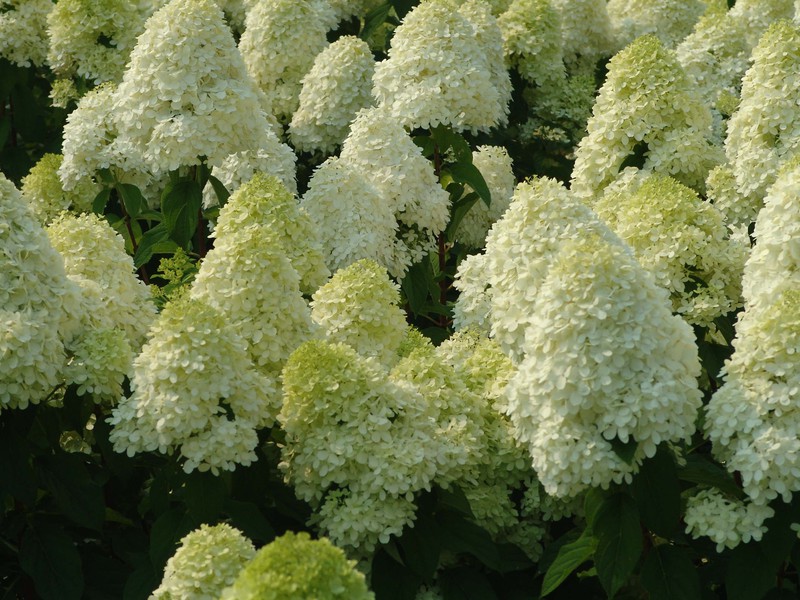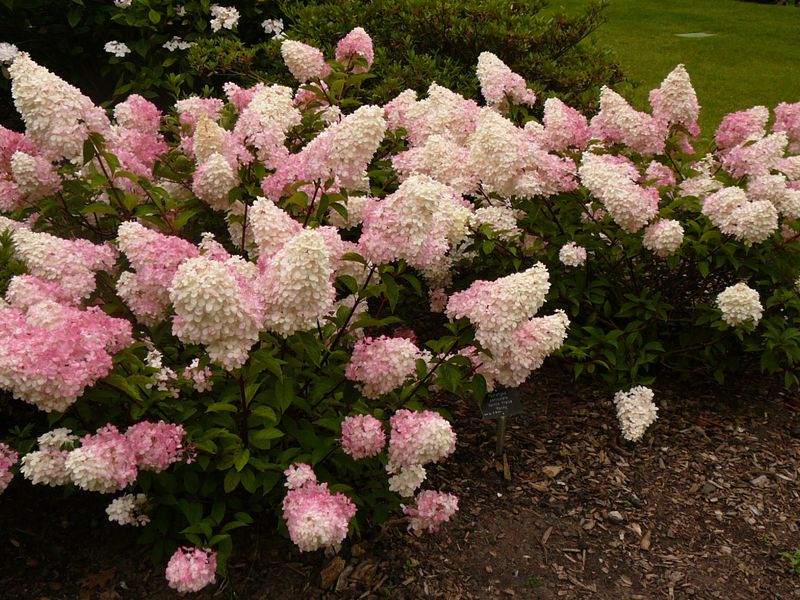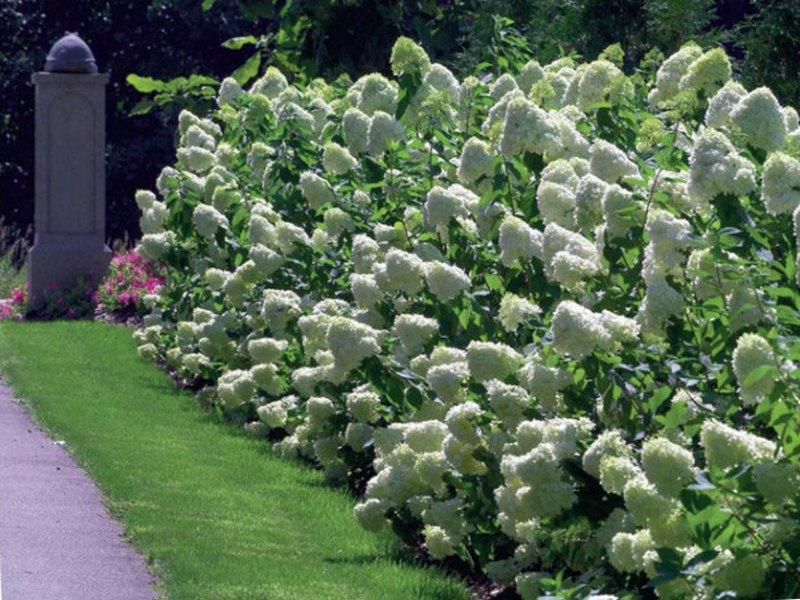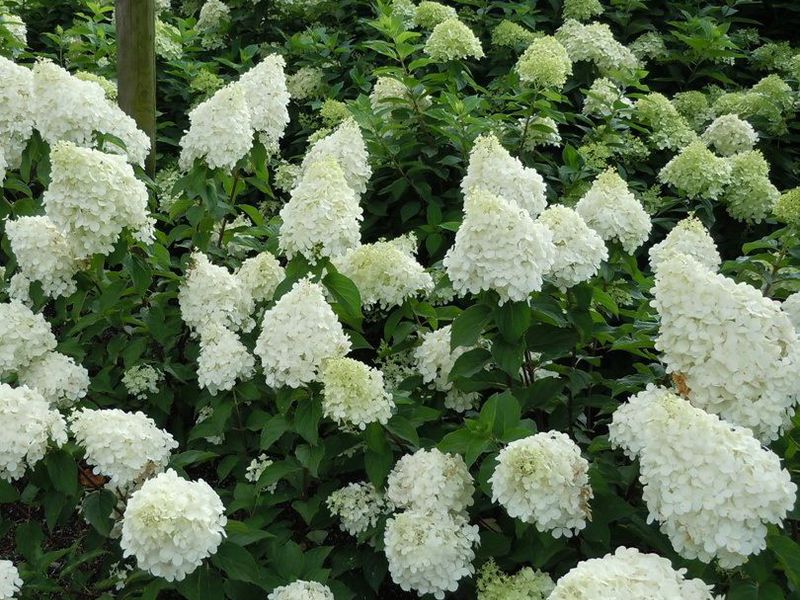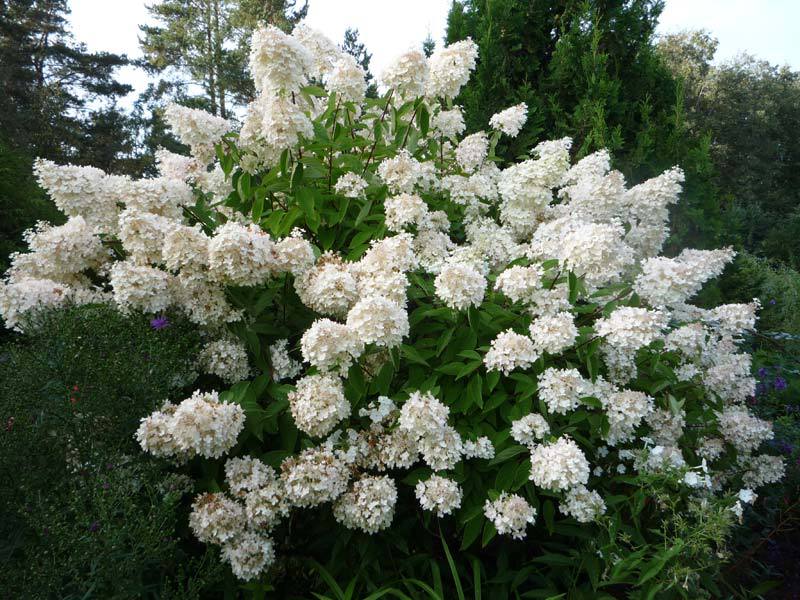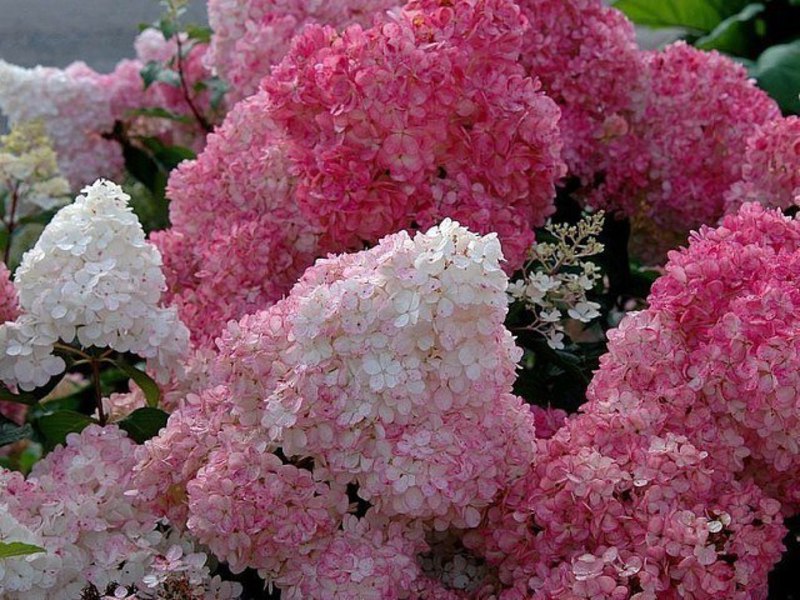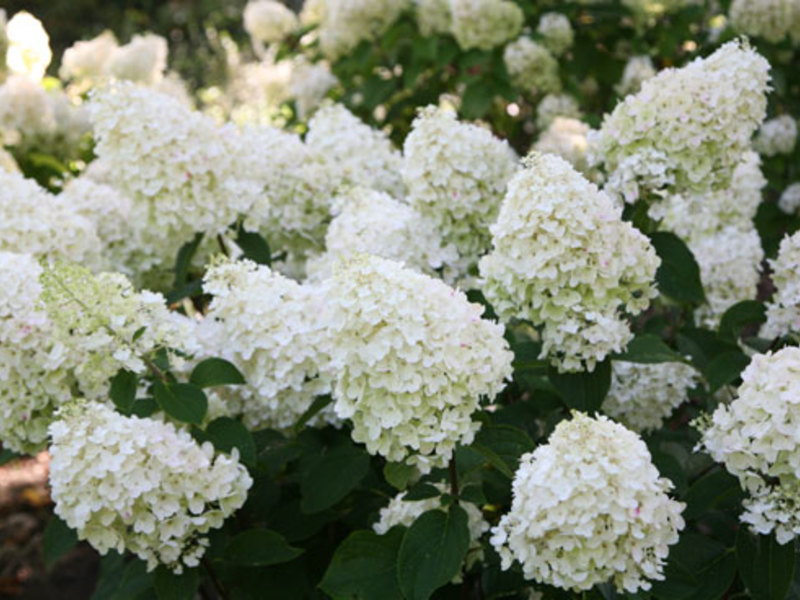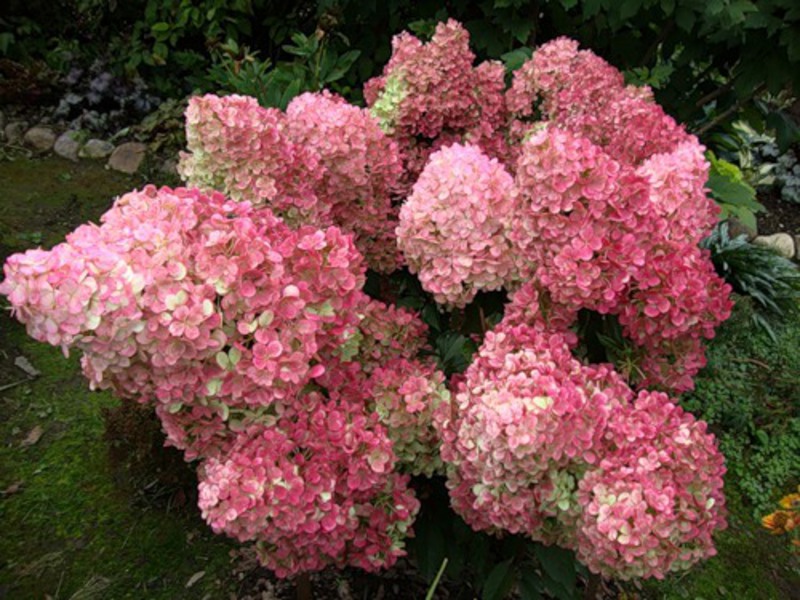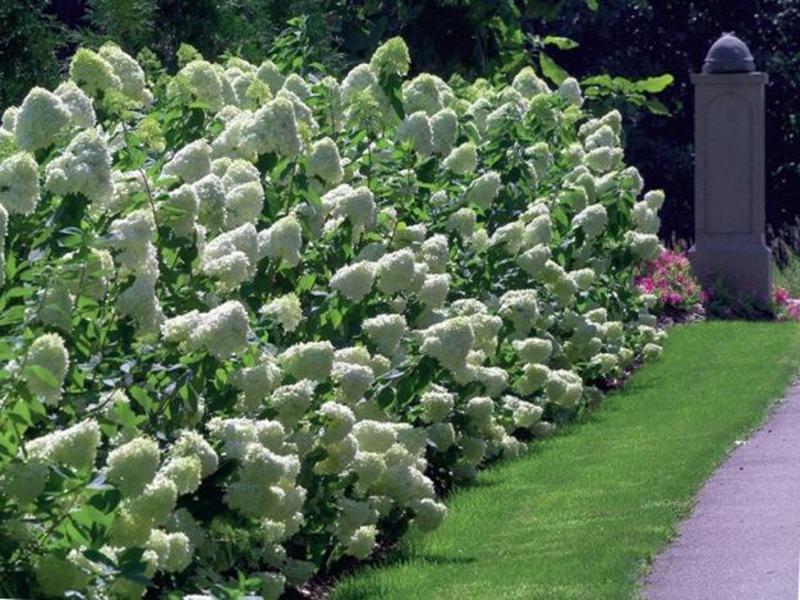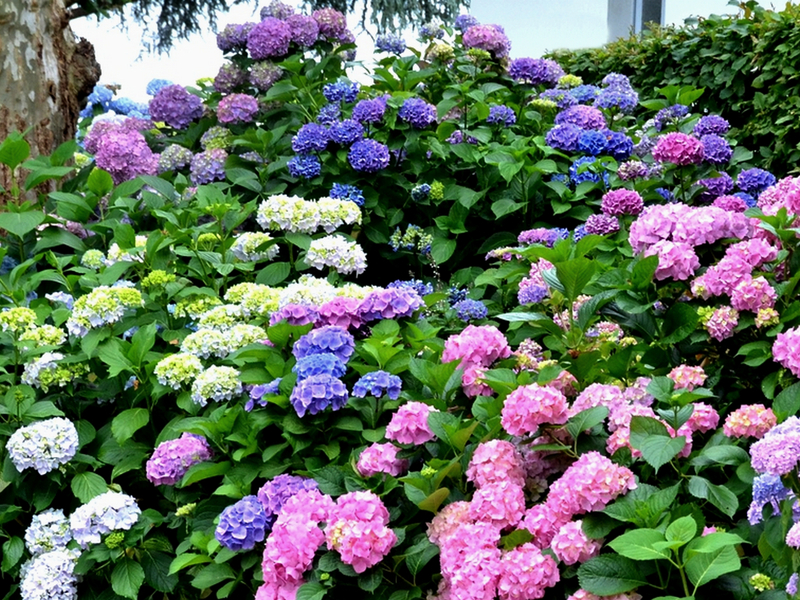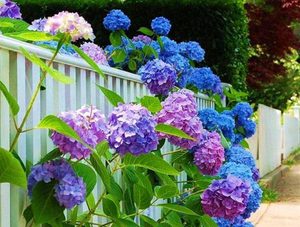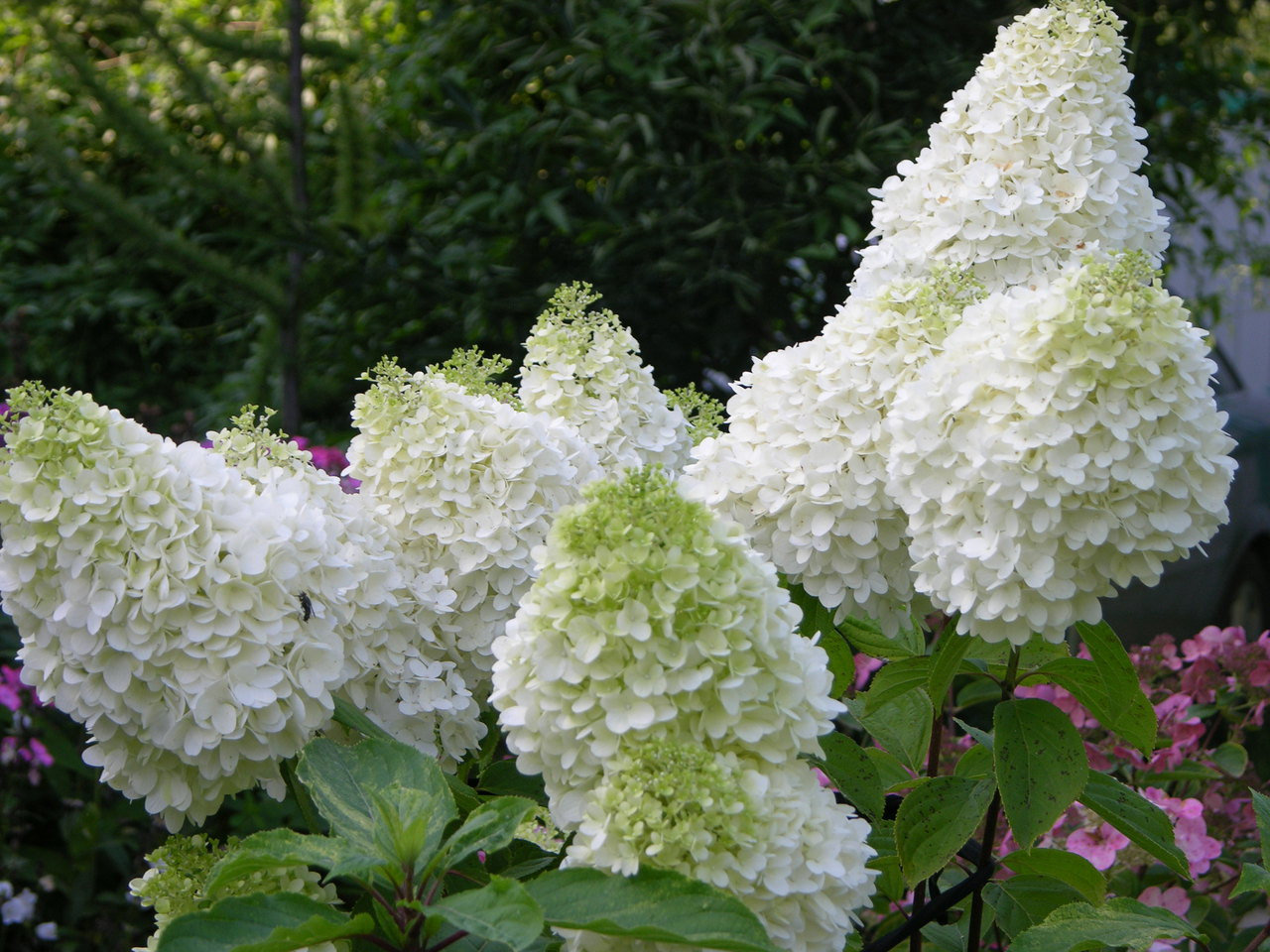Hydrangea is an incredibly beautiful and original shrub. In the world, it has a large number of varieties, but in our area the most common of them are paniculate and tree-like. They can often be found in gardens in different parts of our country.
In the material, we will tell you what varieties of hydrangeas exist, how they differ from each other, what are the features of caring for a plant. You will also see a photo of panicle and tree hydrangea.
Content
Features of panicle hydrangea: plant photo
Hydrangeas first appeared in Europe in the 18th century, where they were brought from Japan. The varieties began to be bred in the 20th century, now there are more than 100.
The key differences between panicle hydrangea and tree hydrangea are:
- a paniculate plant resembles a tree, and a tree-like plant resembles a shrub (this is clearly seen in the photo);
- it tolerates cold better.
If we talk about panicle hydrangea, its varieties are very rich in terms of shades. It can also be roomy, such a flower can be grown not only in the garden, but also on the balcony.
Key features the plants are:
- inflorescences in the form of panicles, differ in pomp and bright shade, their length reaches 25 cm;
- plant height can be 10 meters;
- the structure and shape of the leaves of panicle hydrangea depends on its variety. So, they can be velvety or smooth, jagged and ovoid.
- Hydrangea paniculata not only performs decorative functions. It also has such medicinal properties:
- helps to improve the functioning of the urinary system;
- normalizes the kidneys;
- saves with prostatitis.
According to legend, the garden hydrangea is considered the keeper of the owner of the garden.
Hydrangea paniculata: varieties
Below we present to your attention several categories of varieties of panicle hydrangea with their description. You can see some species with your own eyes in the presented photos.
Such varieties are most often grown in central Russia. They differ in height, inflorescence, shades and leaf shape. Care for them is about the same, so the varieties differ exclusively in appearance:
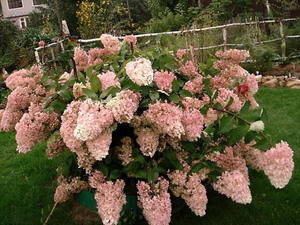 Kyushu is a small shrub that grows up to 3 meters in height. Its leaves are smooth and dark, the foliage is lush, and there are not too many inflorescences. Shoots and branches stick out in different directions. The inflorescences themselves are shaped like tips. The flowers have a pleasant aroma, while they are not large and do not have bright shades. Bloom lasts from July to September. The plant loves moisture and light, tolerates frost well, although a young plant is still quite vulnerable in this regard. Loves light and fertile soil, needs regular watering, pruning old shoots;
Kyushu is a small shrub that grows up to 3 meters in height. Its leaves are smooth and dark, the foliage is lush, and there are not too many inflorescences. Shoots and branches stick out in different directions. The inflorescences themselves are shaped like tips. The flowers have a pleasant aroma, while they are not large and do not have bright shades. Bloom lasts from July to September. The plant loves moisture and light, tolerates frost well, although a young plant is still quite vulnerable in this regard. Loves light and fertile soil, needs regular watering, pruning old shoots;- Limelight is a small shrub with dense green or yellow inflorescences. The maximum height is 1.5 meters. The leaves have a bright green tint and an oblong shape. Flowering lasts from mid-July to September, the inflorescences are splendid.The optimal soil is fertile without lime, the plant loves the sun and needs winter insulation at a young age;
- Pink Diamond - has unique pink pyramid-shaped inflorescences. Shrubs can grow up to 2 meters in height, the branches are straight, the leaves are small with denticles at the edges. This hydrangea tolerates frost well, but with the onset of spring, frozen branches must be removed. Needs regular watering, especially if the weather is hot and dry;
- Taurida - such a shrub blooms later than the others - from the end of August. There are not so many inflorescences and they do not differ in density. The flowers are white or pink. Needs watering, light and fertile soil, tolerates frost well.
The most attractive varieties of panicle hydrangeas (photo)
And there are varieties of hydrangeas that are distinguished by their attractive appearance... Below is a list of them, some samples are present in the photo:
 Unique - the bushes of this variety are sprawling, have lush white inflorescences. Flowering occurs in the second part of summer, a rare garden does without hydrangeas of this variety. The shrub can reach a height of 2 meters, the plant loves the sun and moisture. In early spring, you need to cut it off and remove the frozen shoots. In a non-severe winter, the plant is covered;
Unique - the bushes of this variety are sprawling, have lush white inflorescences. Flowering occurs in the second part of summer, a rare garden does without hydrangeas of this variety. The shrub can reach a height of 2 meters, the plant loves the sun and moisture. In early spring, you need to cut it off and remove the frozen shoots. In a non-severe winter, the plant is covered;- Bobo is a relatively new plant variety and is a dwarf panicle hydrangea. The bush itself is less than a meter high, its flowers can be white, pink, yellow and have conical inflorescences. The flowering itself is lush and abundant, it lasts during the second part of the summer. The plant loves to be in partial shade, needs fertile soil and good drainage. In winter, it is better to cover and mulch with leaves, and cut it off in spring. Suitable for decorating flower beds and front gardens;
- Great Star - representatives of this variety have large inflorescences and large flowers with 4 propeller-shaped leaves. Despite their attractive appearance, they are odorless. The height of the bush can be 2 meters. Flowering occurs in the second part of summer, the leaves are shiny and oval. The plant loves partial shade, tolerates moderate frosts well, needs moisture and feeding. In early spring, the hydrangea needs to be pruned;
- Vanilla Fries - representatives of this variety have large inflorescences, in the form of pink pyramids. The height is about 2 meters, the bush blooms magnificently, but late. At first, the flowers are white, then they turn pink. Differs in frost resistance, love in light and moisture;
- Grandifola - this variety is a huge and massive bush, the inflorescences are also large and white, and the leaves are oblong and velvety. The average height is 2 meters, the flowers have a pleasant smell. The plant is frost-resistant, but does not like strong winds. Needs light, fertile and sufficiently moist soil.
New species
New varieties of panicle hydrangeas appeared not so long ago, but already gained popularity among gardeners... Below is a description of some of them:
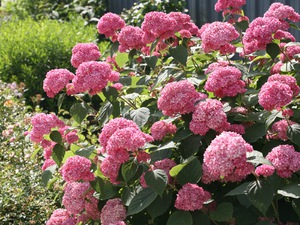 Mega Mindy is a flower that grows abundantly and long enough. Plant height is about 1.5 m, it is dense and splendid, blooms from July to October. The cone-shaped inflorescences include white flowers, which then turn pink. The shrub can grow even in harsh urban conditions, but if it has enough sun and moisture. It tolerates frost well, needs good drainage when planting, and loose soil. Once every three years, old shoots are removed at the root;
Mega Mindy is a flower that grows abundantly and long enough. Plant height is about 1.5 m, it is dense and splendid, blooms from July to October. The cone-shaped inflorescences include white flowers, which then turn pink. The shrub can grow even in harsh urban conditions, but if it has enough sun and moisture. It tolerates frost well, needs good drainage when planting, and loose soil. Once every three years, old shoots are removed at the root;- Silve Dollar - representatives of this variety have large white inflorescences, which turn pink in autumn. It can grow both in the sun and in partial shade, loves moist soil and good drainage. It blooms from mid-July to September, the soil should be fed on time. In winter, it is advisable to cover the plant. For abundant flowering and good appearance, old branches must be removed;
- Sande Freich - such a new variety of hydrangeas has appeared recently, but has already won prizes at specialized exhibitions.The shrub is very bright, its inflorescences, after acquiring a pink hue, have an unusually beautiful appearance, their color depends on the type of soil. Can grow in full sun or partial shade, loves moist soil. Prune it in early spring;
- Phantom - shrubs of this variety are not too tall, but bloom very profusely. At the top, due to the lush inflorescences, the leaves are almost invisible. They turn pink over time, and in order to give the plant splendor, in the spring you need to cut off the shoots.
Features of caring for paniculate hydrangeas
Despite the abundance of varieties of panicle hydrangeas, caring for them is mostly the same. It is quite simple and does not require any special skills. Remember that hydrangea is very moisture-loving and needs regular watering... It is better to choose acidic soil, if it is not acidic enough, then you can replenish this with copper sulfate.
The landing site should be in the sun or partial shade, there should be no strong winds. This plant tolerates winters well, but it is better to cover them in cold weather.
In early spring, shrubs are pruned for subsequent abundant flowering. Pruning should not be started during sap flow.
Hydrangea needs regular feeding, mineral fertilizers are applied every 2 weeks, organic fertilizers - every 4, respectively. Top dressing stops with the onset of autumn.
Pruning
Pruning needs to be taken very carefully. If done correctly, then only this can guarantee good flowering. Spring plant trimmed before budding and after the snow melts.
The panicle hydrangea has a peculiarity - it grows and the number of its shoots increases. In this case, the inflorescences become smaller. This is why it is recommended to prune the plant.
For a good flowering, you need to thin out last year's shoots that grow from one point, while leaving a maximum of two. This will create an influx of light for the inflorescences.
Tree hydrangeas: varieties and photos
Tree-like white hydrangea originally from North Americawhere it grows naturally. There are also many varieties of this type of hydrangea, below we list the most famous:
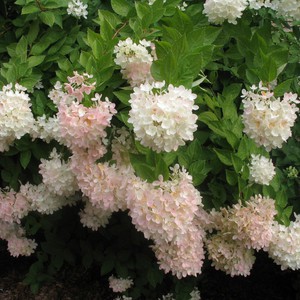 Annabelle is the most popular variety, it is frost-resistant;
Annabelle is the most popular variety, it is frost-resistant;- Pink Annabelle - has lush pink buds, a bit like lilacs;
- Strong Annabel - a strong and durable shrub, the inflorescences are round and retain their shade for a long time;
- Grandiflora - loves partial shade and does not like long dry periods;
- Incredibol is a hydrangea variety, the flowers of which often change shades during flowering;
- hydrangea pink treelike;
- Hayes Starburst - tolerates frost well and blooms until frost;
- Bounty - needs a lot of light, small white flowers gather in one big "bouquet";
- Pink Ainkushen - inflorescences are distinguished by their pyramidal shape;
- terry hydrangea resembles a fluffy fur ball in shape;
- Sterilis - This variety needs abundant watering and well-drained soil.
Features of planting, reproduction and care
Before planting in the garden or on the site of a tree hydrangea in advance you need:
- hold the cuttings or seedlings of the plant in a warm liquid diluted with a solution of potassium permanganate;
- plant them in composted soil;
- water abundantly.
Alternatively, you can make a mini greenhouse, which will allow the plant to adapt faster. You need to transplant the plant only when it is warm, for example, in spring, and only in the morning. Gently uproot the plant and try to keep the roots as much as possible.
Treelike garden hydrangea is propagated by division or cuttings. Dividing a bush can be a problem for beginners. If you do not know the matter, you can damage the plant. It should be planted by cuttings in the fall in wet weather.
Caring for a tree hydrangea depends largely on its variety. Each variety has its own characteristics and requirements in relation to soil, sunlight and moisture regime.
Getting ready for winter
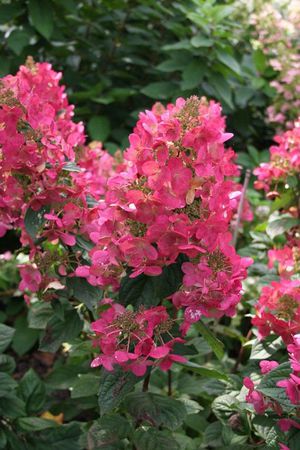 When preparing a plant for winter, you need to do the following:
When preparing a plant for winter, you need to do the following:
- cut off dead branches and grab the leaves;
- cover the plant at the base with sawdust;
- cover it with boards;
- tilt the bush and tie it with a rope, then fasten everything;
- cover the hydrangea with waterproof wrap;
- from above we fall asleep with an abundant layer of sawdust.
All this will contribute to the fact that the plant will bloom well for more than one year.
The plant needs pruning twice a year. The first time it is pruned in the fall to give shape and remove dead branches. And the second time pruning is carried out before wintering the shrub... All cut branches are treated with a solution of potassium permanganate, then covered with a thick wax layer.
Diseases and pests
Often, pests are the reason that the hydrangea stops blooming. The spider mite negatively affects not only the foliage, but also the root system, as a result of which the leaves turn yellow and rot.
Dangerous diseases for a tree hydrangea is:
- fungal diseases;
- false mealy growth;
- chlorosis, which develops due to a large amount of humus.
Regardless of which variety and type of hydrangea you have chosen for your garden or summer cottage, you need to properly care for it, and it should also look harmonious against the general background with the rest of the composition from other plants.
